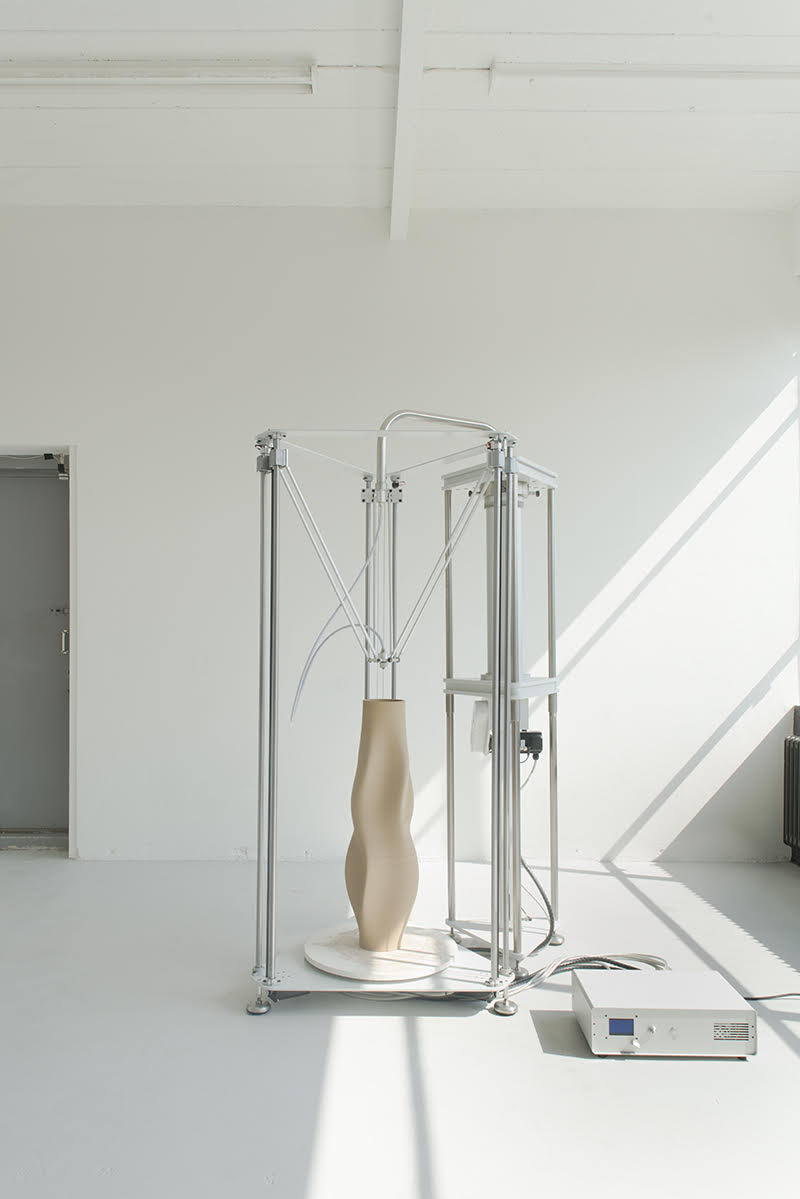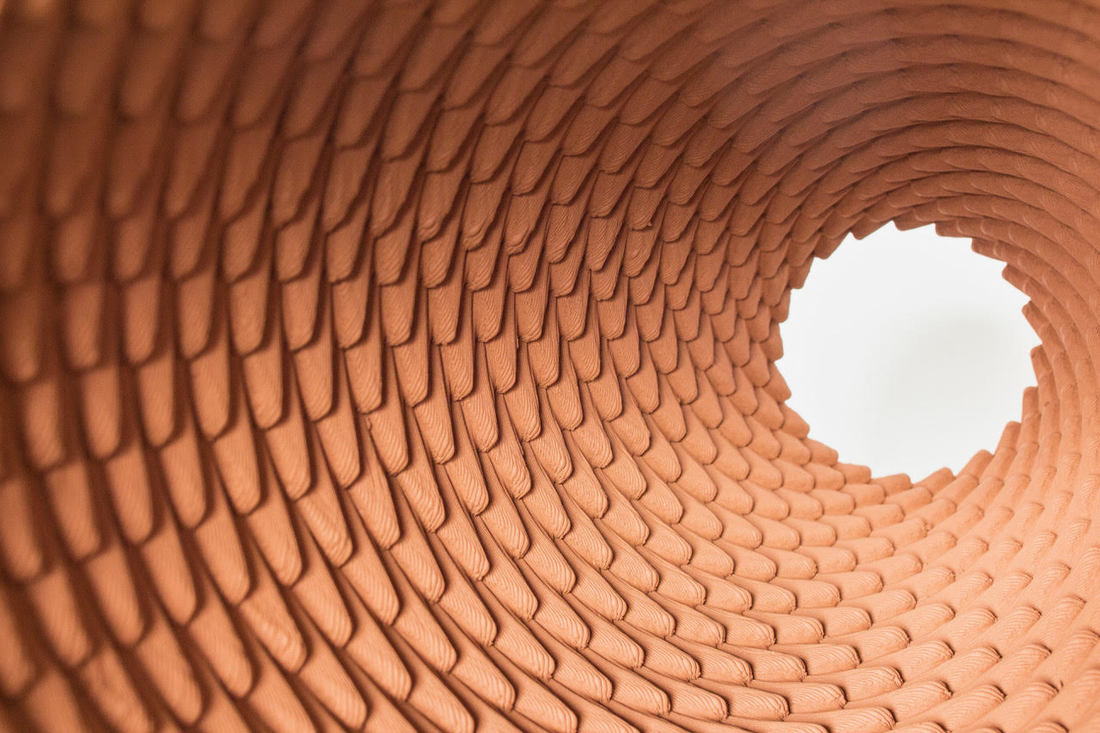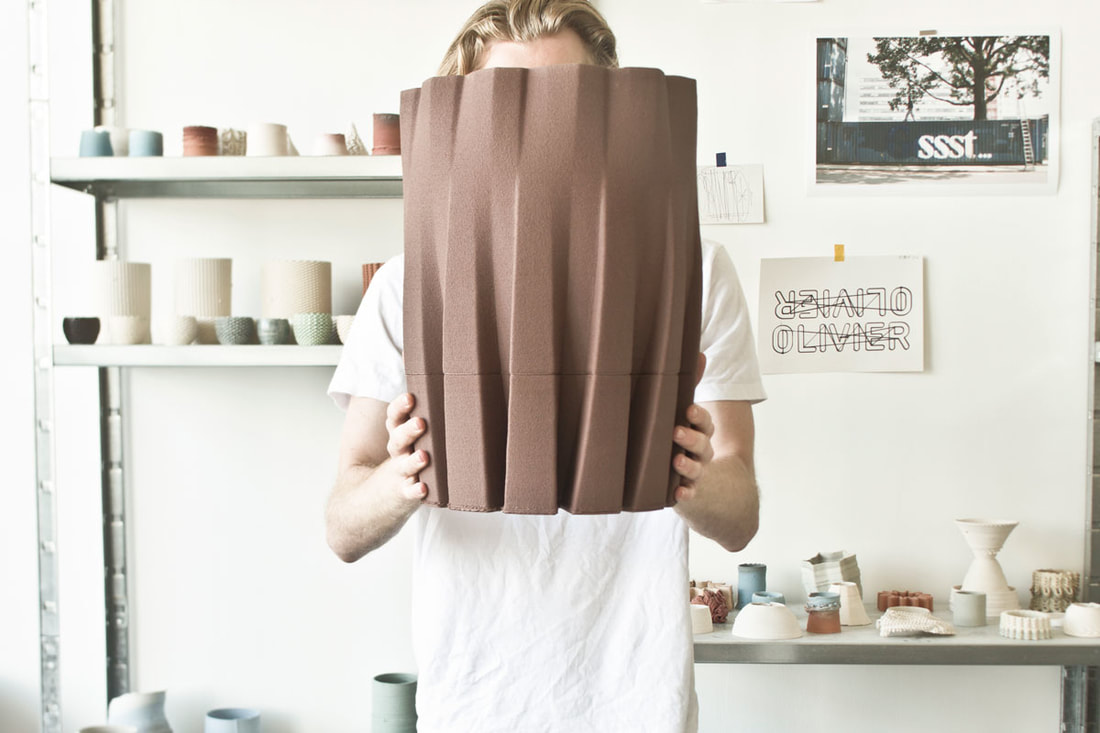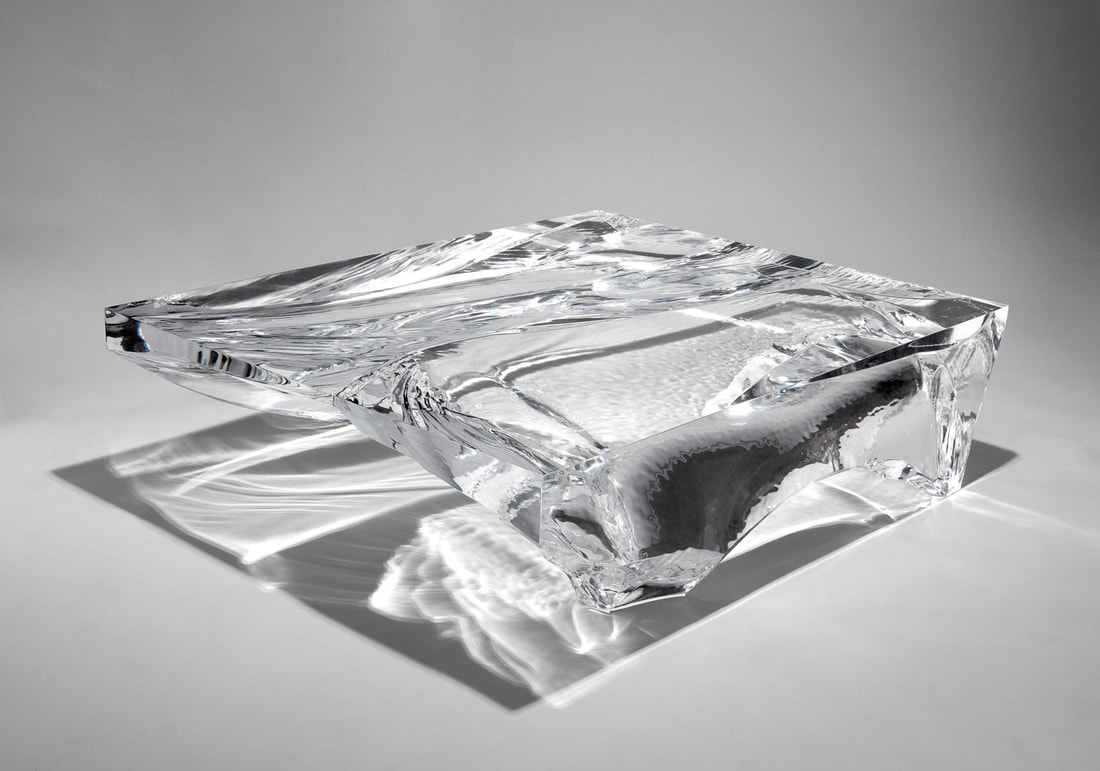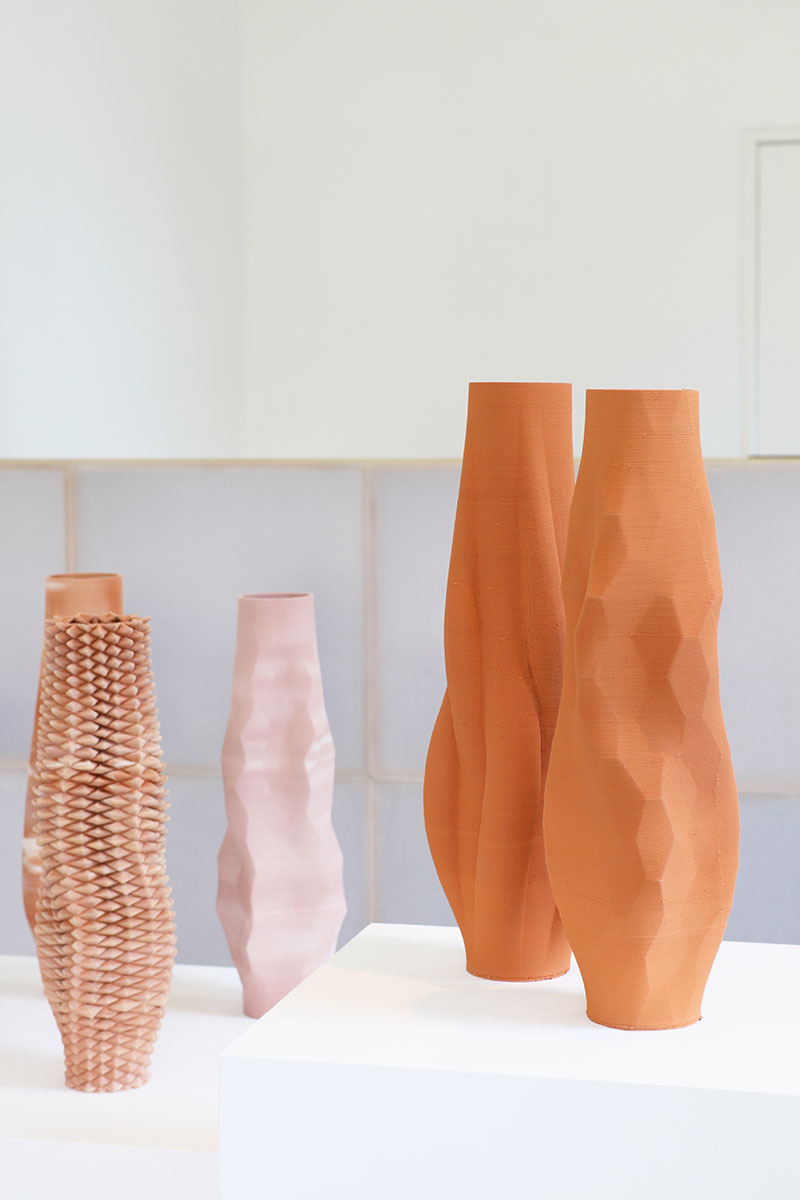In an upcoming article, where I seek to propose the ultimate definition of the term ‘collectible contemporary design,’ I have suggested the factors which have come to outline this rather complex and intriguing territory. One of them is the ability to use traditional materials in a new, groundbreaking, innovative process and to then have that process determining the form. This is what I had in mind when I saw the work of Dutch designer Olivier van Herpt, presented at Design Miami/ by Rotterdam-based Galerie VIVID. The enormous ceramic vessels, offered in groups (above) were created by a 3D printer built by the designer. They are made in earthenware in the most beautiful textures that are so soft that they look as if they are made in silk. To van Herpt, the printer has become his tool, and one that has come to inform his art; he has constantly pushes its boundaries, seeking to allow the machine achieving its best, perceiving it not only as a maker tool, but also as a sketching process. I found the juxtaposition of the enormous vessels with the textured super thin lines of ceramics; the silky softness of the form with the hardness of the earthenware; the ancient material with the digital-age tool, all compelling and absorbing.


